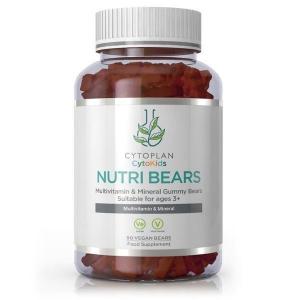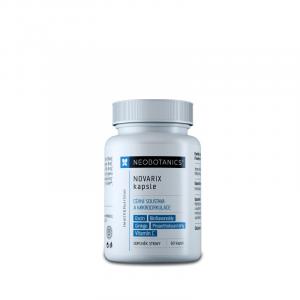
Discover the Power of Hypertrophy and Its Impact on Fitness and Health

What is Muscle Hypertrophy and How Does It Work?
In recent years, the term hypertrophy has become increasingly common not only in the world of professional sports but also among regular people who want to get in shape. Although the term may sound somewhat technical, it essentially refers to a natural process that occurs in our body during exercise. Whether the goal is greater strength, volume, or a healthier body, muscle hypertrophy plays a key role in this development.
How Does Muscle Hypertrophy Actually Work?
To some extent, hypertrophy is a simple physiological mechanism. When we stress our muscles during exercise, micro-tears occur in them. The body responds to this stress by not only repairing these damaged muscle fibers after training but also strengthening and enlarging them to better prepare them for future exertion. The result is precisely the growth of muscle volume, or muscle hypertrophy.
This phenomenon is generally divided into two main types:
- Myofibrillar hypertrophy, which primarily leads to increased strength – muscles remain relatively compact but become stronger.
- Sarcoplasmic hypertrophy, where there is an increase in the volume of cellular fluid in the muscles – muscles thus appear larger, though without a significant increase in strength.
Different types of training can support one type of growth or the other, but in practice, they often overlap and occur simultaneously.
What Influences Muscle Growth?
It's not just about weights and proteins. Several factors affect whether hypertrophy actually occurs. The key is, of course, the intensity and type of training – the load should be sufficient to trigger adaptation, but not so great as to lead to overtraining or injury. Nutrition plays a crucial role – without sufficient intake of quality proteins, the body simply has no material to build new tissues. Equally important is rest and sleep, as most of the regenerative processes occur during this time.
Also significant are age, gender, and genetics. Men gain muscle faster than women due to higher levels of testosterone. On the other hand, hypertrophy is possible in both genders and at any age – albeit with varying intensity.
One often overlooked factor is mental state. Chronic stress can increase cortisol levels, a hormone that, among other things, reduces the body's ability to regenerate and effectively build muscle mass.
What Does Training for Hypertrophy Look Like?
The classic image of hypertrophy is associated with heavy strength training in the gym. And indeed, resistance training, or exercising with resistance (weights, machines, but also body weight), is the most effective way to support muscle growth.
Research suggests that it's optimal to exercise with weights that allow about 6–12 repetitions per set. It's important to train to the point of "muscle failure," where it's no longer possible to perform another repetition without losing technique. This creates sufficient stimulus for growth.
But it's not just about the gym. Even functional training, yoga, or calisthenics can lead to hypertrophy if performed with sufficient intensity. For example, exercises with resistance bands or pull-ups on a bar can yield very similar results to traditional strength training.
Increasingly, there's talk about mindful movement – that is, focusing on technique, slow and controlled execution, and connecting the mind with the muscles. This approach can be more effective than frantically lifting heavy weights without control.
A Real Story - When Hypertrophy Changes Life
An example can be the story of Ms. Lenka from Brno, who started weight training at 52. She wanted to firm up her body and improve her health after menopause. After half a year of regular training twice a week with a trainer who taught her basic exercises with her own weight and light weights, she not only lost 8 kilos but also gained muscle, felt stronger, and her back pain ceased. "I never thought I'd have muscles at my age," she laughs today. Her story shows that hypertrophy is not the preserve of bodybuilders but a natural part of a healthy lifestyle.
Nutrition as the Foundation
Without proper nutrition, muscle hypertrophy would not be possible. The basic building block is proteins – ideally 1.6 to 2.2 grams per kilogram of body weight per day, which corresponds to about 120–160 grams for a woman weighing 70 kg. Quality proteins can be obtained not only from meat and dairy products but also from plant sources such as legumes, tofu, tempeh, or quinoa.
Apart from proteins, it's essential to pay attention to carbohydrate intake – as they serve as the main energy source during training – and also to healthy fats, which support hormonal balance. Hydration and sufficient micronutrients (especially B vitamins, iron, magnesium, and zinc) are also necessary for optimal muscle function.
Try our natural products
Recently, there has been a growing preference for ecological and plant-based dietary supplements, which can be gentler on the body and the planet. For example, plant-based proteins from peas, hemp, or rice are a great alternative to whey products, especially for vegans or people with lactose intolerance.
Hypertrophy is Not Just About Appearance
It's easy to succumb to the impression that hypertrophy is just about bigger muscles and aesthetics. In reality, it represents a crucial factor for health, longevity, and quality of life. Stronger muscles mean better posture, a lower risk of falls and injuries, more stable blood sugar levels, faster metabolism, and higher resilience to stress.
According to a study published in the Journal of Gerontology, maintaining muscle mass is key to independence in old age. Muscle hypertrophy is thus not only a path to better shape but also an investment in the future.
Moreover, building muscles has a positive effect on mental health. Regular exercise promotes the production of endorphins, reduces anxiety, and improves sleep quality. As well-known trainer Martin Snášel says: "A strong body gives rise to a strong mind."
The environmental perspective is also interesting. Sustainable forms of movement, such as bodyweight training, outdoor running, or cycling, can serve as alternatives to air-conditioned fitness centers with high energy demands. Combining care for the body and the planet is thus not impossible – on the contrary, it goes hand in hand.
Building muscles is not a matter of a single week. It is a process that requires patience, systematic effort, and respect for one's own body. But the results are worth it. Greater strength, a healthier body, better posture, and self-confidence – all of this can be the result of a journey enabled by muscle hypertrophy.







